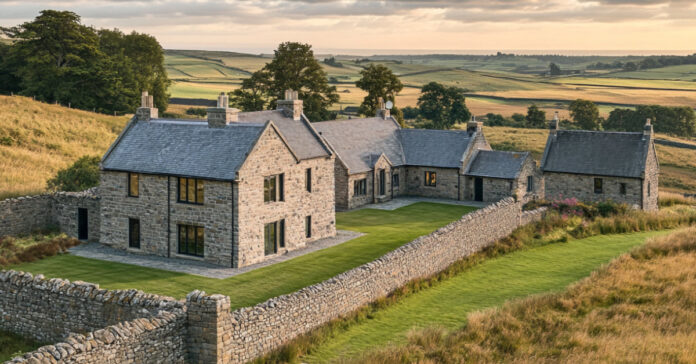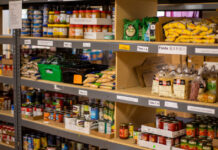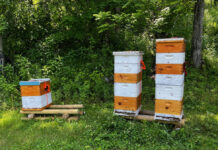I am writing today to discuss what you need to do to prepare for the future. I’m not talking about preparing for war, nuclear bombs, an EMP attack, or even a large-scale regional disaster. If you have been prepping for a few years, you should be prepped for those disasters.
I’m talking about preps that will help you prosper in what passes as the “normal” world in 2025, 2027 and beyond.
Like it or not, the world is changing, and you need to be prepared for what is coming. We’re at an inflection point where things will either get worse, possibly for many years, or they will show only incremental improvements. I don’t think we can count on the latter.
Think back to 2020 and 2021, the height of the COVID pandemic and how much the world changed in that brief period. Businesses were shut down. Going to church was banned. People could not visit their loved ones or to give comfort and hold the hand of someone as they died. The police state showed its ugly head, and we saw just how tyrannical our governments, both federal and local, could become in a period of weeks.
Who is to say we could not be on the cusp of another change of similar magnitude?
Power Scarcity
In the past, our energy shortages have been oil shortages. Next time, we’re going to see electricity shortages as the U.S. cannot build electrical generation and distribution systems fast enough to meet demand, especially after coal plants have been shut down.
I foresee a future in which an electricity shortage leads to much higher prices, blackouts, and brownouts. It might start as soon as 2026, especially if Kamala is elected president. While a Trump presidency might delay the outages, I think they are inevitable. Unless the U.S. builds a couple dozen nuclear power plants or there is a breakthrough in micro-nuclear power or fusion, you can expect to pay more for electricity and to suffer though third-world like conditions in which you only have utility power 12 to 18 hours a day.
What can you do? You can produce your own power, either via generator, solar, or hydropower. Around here, about a third of the homes have a propane-powered whole-house generator. In pricier neighborhoods, it’s closer to 100 percent. Personally, I would prefer an old diesel generator, but either will get the job done and both diesel and propane are safer to store than gasoline.
With any luck, battery storage will become much cheaper as the technology improves. People can then can install whole-house battery power systems that will carry them through the blackouts. A whole-house battery and a generator that recharges it may be the simplest, most cost-effective solution, as long as you can find fuel.
Service Disruptions
If you recall my recent post on grid-down survival, you remember that no electricity means no ATMs and credit card processing, store and office closures, gas stations that can’t pump gas, and possibly cell tower and internet outages.
If we enter a period in which random power outages hit for hours at a time due to shortages, you must be prepared for all the above plus HVAC systems that don’t work. That means you will need to do basic prepper things such as keeping your car’s tank at least half full and storing additional gas at home, carrying cash, and making sure you have battery packs for charging cell phones and laptops. My advice is to do these things now, so you will not only be prepared but they will be second nature.
I talked about what passes for “normal” in the future. Imagine when power outages may become so common place that they are announced daily, along with the weather forecast and the pollen alerts. You’ll wake up, check the news, and decide whether it’s worth going to work and getting trapped on mass transit or in the elevator when power dies or if you can work from home.
Rising Crime
Our current system of law and order is weak, understaffed, underfunded, and populated by prosecutors who prefer to slap wrists rather than kicking asses. The “defund the police” movement destroyed many urban departments, sending officers into retirement or to red states, small towns, and rural counties. In too many places, a police response can take 30 minutes or more, assuming someone answers when you dial 911.
When you consider the impact of a recession, food shortages, and decreased police presence, the time may come when grocery stores have armed guards and a trip to pick up groceries is considered dangerous and best made in a convoy with other heavily armed shoppers.
Don’t expect police departments to return to pre-George Floyd levels for a generation or two.
Natural consequences of the rising crime rate will be the emergence of more paid security services that will chase away criminals, more people with bodyguards and armored vehicles, and more communities that are walled and gated. These tactics will not stop crime, just protect the rich while those who cannot afford such protections become victims.
This is the time to upgrade your exterior doors and install better locks. Cameras and other electronics you can scare off or slow down criminals, but be prepared to be your own first responder and defender. Even if the police in your area are fully staffed, they are likely to be minutes away when seconds count.
Start with gates and walls or fences, then lighting and motion-sensing cameras, locks and barricades, ferocious dogs, and add firearms as the last line of defense.
Water Shortages
We are seeing more droughts than even before, with reservoirs and aquifers drying up. Not only do population increases in places like Arizona and Nevada mean more water consumption, so does more manufacturing. Despite the EPA and the Army Corps of Engineers being involved, I doubt any president can do much to affect the flow of water in rivers out West.
Just like the well-equipped home of the future will have its own source of power, it should also have its own water source or a large storage tank or cistern. You may have to be reliant on an outside water supplier, but that doesn’t mean you can’t store their water, preferably on a first-in, first-out basis. If you have a way to capture and clean rainwater, even better, assuming your area has sufficient rain.
Start storing water in five-gallon containers sold for camping. Then consider upgrading to plastic 55-gallon drums. When you can afford it, a tank or two measured in the thousands of gallons will be better still. When you get beyond the five-gallon jug, make sure you store them on a cement garage or basement floor, ideally one with a drain. Oh, and don’t forget a pump to access the water.
Supply Chain Disruptions and Food Shortages
After COVID, the supply chain disruption meant not being able to find parts to repair tractors and heavy equipment, a lack of chips for new cars, and Christmas items that arrived in ports after Christmas. We forget that at the beginning of the pandemic dairy farms were pouring milk down the drain, potato farmers were destroying their crop because they couldn’t get it to market, and some foods could not be sold because the manufacturer didn’t have the appropriate packaging.
In the next supply chain breakdown, which may be caused by war or an economic collapse, we could see shortages of industrial equipment, consumer goods, and food all at the same time.
The only thing you can do is to stockpile stuff. Start by buying two of whatever you need, so you have a spare one. Then, when you use the spare, buy another. Stay ahead and you won’t have to run out to the store for something, only to find it is out of stock.
Finally, things will last longer if kept clean, greased or oiled, and in good repair. I changed the oil and filter in the log splitter to keep this critical piece of equipment running. Preventive maintenance will save you time, money, and aggravation.
Fences and Walls
I consider a homestead to be an ideal prepper property because it is usually in a rural area and you can raise your own food. A good one will also have a natural water supply.
Looking at the list above, I can see the value of a walled compound, such as you see in some third-world countries. (Let’s face it; we are living through the third-worldization of the U.S.) This could be at the core of the homestead or instead of a homestead.
Medieval keeps had walls, and the early colonists built forts for protection from potential threats. People might live outside the walls but they could retreat inside when the SHTF, often bringing their livestock with them. The way things are going, you may need that kind of defensive structure in the future. The time to plan for it is now.
I’d rather have a masonry wall that you can’t see through which offers some ballistic protection, but a strong fence and a locked gate is a good starting point. Masonry walls can also protect your fuel storage tank and water tank. If you plan to move to a prepper property one day, you should at least look for places where you can add a gate or a fence to limit access from the outside. Most homestead fences are designed keep animals in, but there is no reason they can’t also keep people out.
I don’t have a fence or gate, but I have 30 feet of heavy chain and two large eyebolts I can screw into trees on either side of our driveway. If I need a “gate” that will stop vehicular traffic, I can install the chain in less than 30 minutes. It can also be used in multiple spots along our private road.
Prepare for the New Normal
As preppers, we spend a lot of time preparing for the end of the world as we know it. Don’t neglect to prepare for the world that doesn’t end but slides downhill at an increasing pace.







